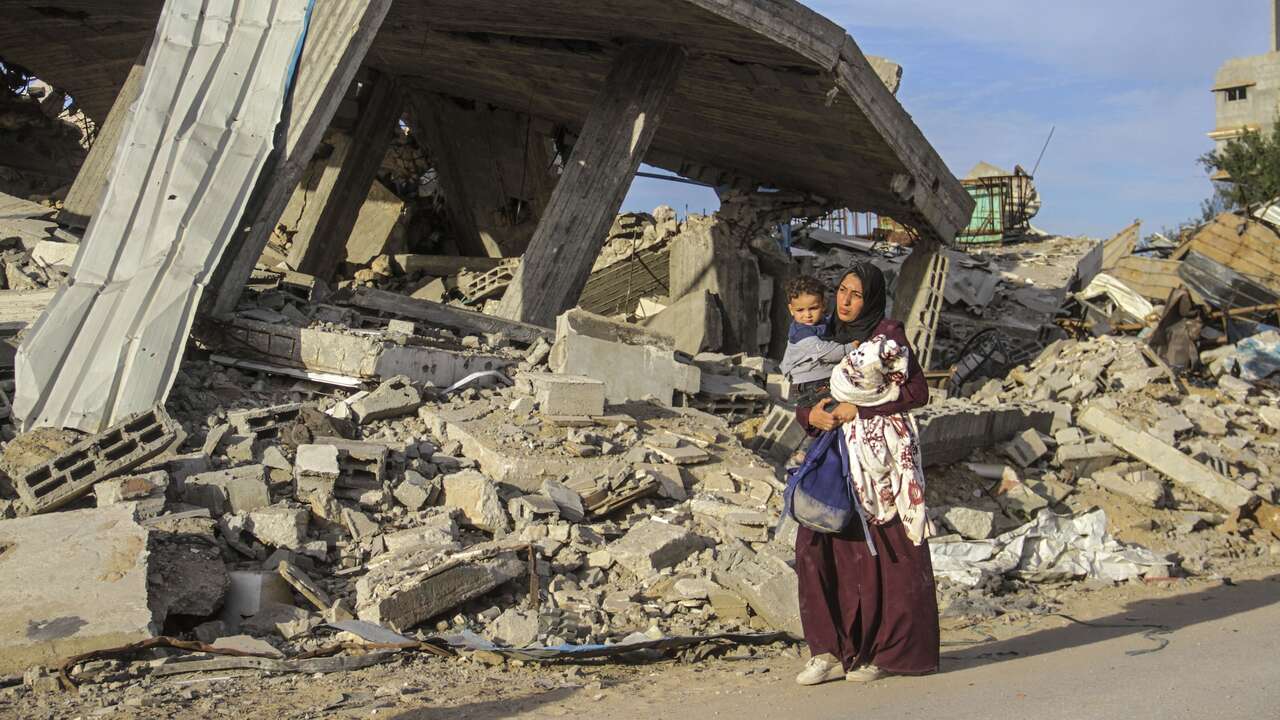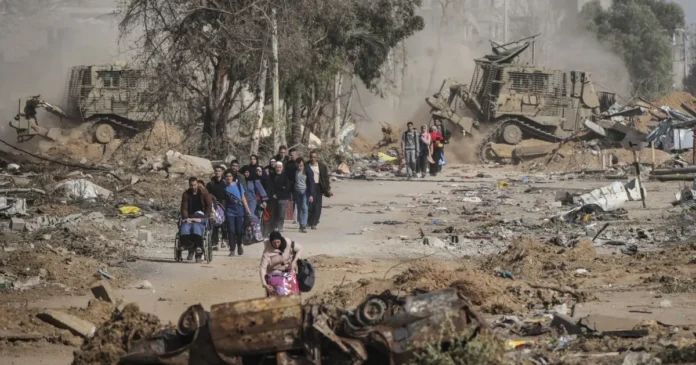A Building Once Full of Life
On a quiet lane branching off Omar al-Mukhtar Street in western Gaza City, the six-storey Skeik building stood as a witness to a different era. Once overlooking Lovers’ Street—a tree-lined path favored by couples seeking privacy—it now lies surrounded by debris and ruin. What was once chic shops, cafés, manicured parks, and gentle strolls has become a landscape marred by war.
Walls are riddled with shrapnel, large sections blown apart. Forty months into the Gaza war, Skeik has transformed: from a coveted address to an improvised shelter for dozens of displaced families. Eight of its ten apartments now house people who have fled their homes, seeking a measure of safety amidst the destruction.
Lives Interrupted: Hadeel’s Story (Fourth Floor)

Twenty-six-year-old Hadeel Daban occupies an apartment on the fourth floor with her husband and three young boys, aged two to nine. They moved in two months ago, renting the empty space for 1,000 shekels (about US$305) per month.
She speaks of constant risk: “Shrapnel hits the walls here, but it’s still better than a tent.” Their windows are gone, covered by torn sheets. Belongings are piled in bags pressed against intact walls. This is their twelfth move since the war began.
Hadeel’s original home in the al-Tuffah neighbourhood was destroyed when a nearby building was struck. On 15 March 2024, a strike on a neighbouring block killed her mother-in-law, wounded her children, and buried her husband under rubble. After hours of searching, he was pulled out, taken to hospital, fractured skull, in a coma. The hospital was later sealed during a military operation; only after troops withdrew was Hadeel reunited with him. He still requires medical care, but many doctors have since evacuated south.
Muna’s Grief and Survival (Fifth Floor)

Above Hadeel lives Muna Amin Shabet, 59, with grandchildren playing under walls riddled by bullets. Two days before the interview, gunfire tore through their apartment. Fear came suddenly: Muna grabbed her grandchildren, ran between rooms, praying for safety.
Originally from al-Tuffah, Muna says their old neighbourhood has been “leveled”—no house left intact. Her family lost everything. They’ve scraped by: eating wild greens, grinding pigeon-feed; these are not stories, but daily reality. “After two years of war, I say I am not alive, I am one of the dead,” she says, voice heavy.
Her sons scattered—some to the south, others to relatives. Even she and her husband spent months apart. The web of extended family that once united them is frayed.
Shawkat’s Missing Brother and a Family Divided (First Floor)
On the first floor lives Shawkat al-Ansari with his wife and seven children. Originally from Beit Lahia in the north—a town now described as “wasteland”—he escaped with his family after their home was destroyed. Four months earlier, his brother went out to fetch flour in Shejaiya and never returned. Despite searching, they still don’t know his fate.
Shawkat reflects on what has been lost: community, stability, education. His children once learned to read and count; now classes are disrupted, lessons forgotten. The constant uprooting has stalled their futures.
What the Skeik Building Reveals
Loss of Home and Identity
For all three families, home is more than a shelter—it is past, identity, history. All have lost both.
Displacement and Disconnection
Neighbors disappear: some killed, others displaced further south. In Hadeel’s words, “I don’t even know where my original neighbours are.” Community ties are shredded.
Resilience Amid Fear
Even under bombardment, these families choose makeshift shelters, moving repeatedly rather than waiting to be caught unprepared. When warnings came that Israeli forces might enter, some packed for flight in the night.
Broader Impact & Context
The war’s toll touches every corner of Gaza. According to UN estimates, around 90% of residential buildings have been damaged or destroyed. Entire neighborhoods, once alive with shared memories and social support, lie in rubble.
The Skeik building’s location—near Omar al-Mukhtar Street, close to what once housed the American International School and the Palestinian parliament—made it strategically vulnerable. Military operations throughout Gaza, including assaults near al-Shifa hospital and surrounding zones, exposed residents to grave danger.
The Path Forward
These displaced families are caught in limbo. Reconstruction, should peace talks succeed, promises material rebuilding. But restoring what has been shattered—sense of home, identity, community—poses a far greater challenge.
For now, huddled in empty concrete rooms, these families reflect on the loss of what once was and await what may yet be. Their fight is not only for survival of bodies, but for survival of memory, belonging, and hope.
Conclusion
The war in Gaza has not just shattered buildings—it has fractured lives.
The Skeik building stands as a testament to both destruction and survival. For Hadeel, Muna, Shawkat, and many others, each day embodies the struggle to hold onto humanity amid ruins. Their stories are not simply about displacement; they are about what it means to lose home—and still be brave enough to begin again.

